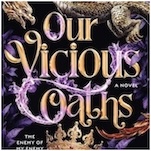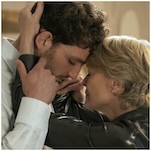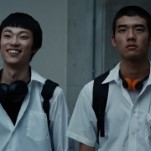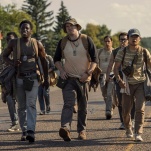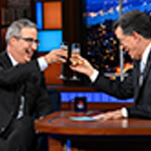Fight Night: Raging Bull’s Central Rivalry is a Bloody Triptych
In three fights, Scorsese inverted the sports movie
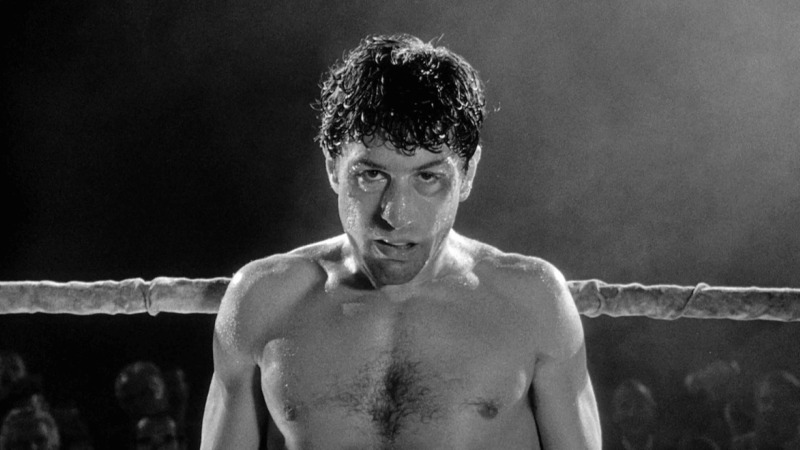
Conflict is the most basic building block of story, and a fight is the most simple conflict there is: Two people come to blows, and one must triumph over the other. Fight Night is a regular column in which Ken Lowe revisits some of cinema history’s most momentous, spectacular, and inventive fight scenes, from the brutally simple to the devilishly intricate. Check back here for more entries.
“Ah, but they aren’t violent until I’ve edited them.” — Raging Bull Editor Thelma Schoonmaker, when asked how such a nice lady could edit violent Martin Scorsese movies at a Nov. 2009 lecture at Canterbury Christchurch.
Sports movie narratives are usually pretty straightforward affairs. There’s a down-on-their-luck team or individual dreaming of the big time, or chafing under the arrogance of some dominant team or antagonist. Our heroes train and learn in pursuit of victory, and in so doing, they grow as people, becoming better versions of themselves. By the end of the movie, they use what they’ve learned and draw on the reserves they’ve built up to push through to a W. It’s a formula as black-and-white as the score up on the board.
Raging Bull is the opposite of that. It is a story not about a climb to victory and apotheosis, but a descent from glory to a nadir. And just as the traditional sports movie states or implies that the plucky hero’s win started with something indomitable inside them, Raging Bull shows with unsparing clarity that Bronx boxer Jake LaMotta’s fall is brought on by his intrinsic and inescapable nature.
That story of unraveling is told in a lot of scenes, in a lot of settings. But LaMotta’s unraveling in the ring is pegged to three visceral fights—brutally filmed recreations of three of LaMotta’s historic bouts with career-long rival Sugar Ray Robinson (Johnny Barnes). There have been a lot of boxing movies since. Few have portrayed the violence of the sport—and the interiority of that violence—as hauntingly as Raging Bull.
Debuting to mixed reviews and a barely successful box office take when it came out, Raging Bull has come to be regarded as one of Martin Scorsese’s best movies in the 45 years since. One of the reasons why are the visceral, time-bending, nasty fights that anchor the major beats of the film.
The Film
And yet, Scorsese almost didn’t direct the thing. In interviews, he’s said he wasn’t interested in sports movies at all. Providing more proof that he’s a guy who just gets it, Scorsese is quoted in one book as saying that his view toward sports could be summed up as “Anything with a ball, no good.” De Niro proposed the project to him after reading LaMotta’s autobiography on-set while shooting The Godfather Part II.
I have not read it. Scorsese apparently wasn’t wowed by the prose, and kept suggesting somebody else direct a film adaptation. A harrowing drug overdose experience and a lull in his career suddenly gave Scorsese the epiphany he needed to actually understand the story’s central character, and he finally agreed.
The movie opens as De Niro is first coming into his fame as a middleweight boxer with a fearsome reputation. His marriage is mutually abusive, his pride causes him to refuse any overtures from the mob about fixing his fights in exchange for kickbacks and opportunities, and he is drawn to an underage girl, Vickie (Cathy Moriarty), for whom he eventually abandons his wife. His boxing career is managed (and micromanaged) by his brother Joey (Joe Pesci), with whom he clashes as often as embraces.
We watch as LaMotta first rides the high of being an undefeated and ferocious fighter, as his age begins to trip up his career, his inherently distrustful nature brings him into conflict with Joey, and his pride finally cracks. He takes a dive for the payout and is disgraced, he leaves boxing to become a nightclub manager mugging before a crowd that knows he’s a has-been. At his lowest point, he’s languishing in a jail cell for trafficking underage women through his club and trying to sell the jewels out of his championship belt to pay off debts, all after his wife has divorced him.
Through it all, De Niro embodies LaMotta with a kind of caged ferocity. He is, before everything else and beneath everything else, a violent man living in a body ravaged by violence. Every fight in the film—and there are several—sells that violence. But the Robinson fights, each in their own way, signal a shift in the narrative, and they’re shot and edited to look and feel momentous.
The Fights
The first fight between LaMotta and Robinson in the movie is actually detailing the second time the two entered a ring together, in 1943 in Detroit. It would end in the first professional defeat of Robinson’s career. In the film, the bout is a blazing fast affair, over in barely a minute. Scorsese keeps the camera intimately close as the two fighters absolutely pummel each other. It’s a feeling of claustrophobia present in every fight scene in the picture, and it suits the real-life LaMotta, a boxer who would be classified as a “swarmer” today—keeping constant pressure on opponents at close range. One of the only times the camera really leaves this close-in framing is as LaMotta pummels Robinson, the view swaying off into the lights, as if both combatants’ perception has veered outside their bodies. In the other, we get a tracking shot following LaMotta as he steadily buffaloes Robinson from one end of the ring to the other, ending his assault in the first knockdown of Robinson’s career.
Scorsese balances the visceral intimacy of the fight with the fact that it looms like a legend in the recollection of the folks who were alive to witness it. As Robinson is punched clear of the ring, the moment freezes, rendered in a photo. It ends in a clear victory for LaMotta—not his last in the film, but his most significant.
“I’ve done a lot of bad things, Joey. Maybe it’s coming back to me.”
Of course, LaMotta and Robinson got back in the ring with one another less than a month later, with a different result. Like the first fight, this one goes by in a blur of gloves. The difference is that it’s clear LaMotta is struggling, even though he’s capable. He inflicts another brutal knockdown on Robinson before the bell, but ends up losing the judges.
The movie immediately cuts to Joey bashing a chair to bits in frustration, blaming everything but Jake’s performance—the judges were rigged, or they gave Robinson a biased score because he was about to join the army. But Jake seems resigned, even dejected, despite the fact it isn’t the first time he’s lost to Robinson. We get the sense that he’s lost more than just one fight.
“Hey, Ray! I never went down, Ray. You never got me down, Ray.”
In LaMotta’s final matchup with Robinson, the action in the ring takes a back seat to what’s going on inside LaMotta’s head. At this point, he and Joey have been estranged for years after another one of Jake’s violent outbursts. Jake tries to call Joey on the phone and can’t bring himself to speak when Joey answers, and then the film plunges straight into the fight.
Scorsese said he chose to shoot the movie in black and white for a couple of reasons: Firstly, that he couldn’t get the color quite right. As an example, the boxing gloves were wrong (modern gloves are bright red, while the vintage gloves of the day were a deeper oxblood). Another reason was that he wanted the water and the blood and sweat to be harder to distinguish—as they are for the boxer in the ring. It’s particularly effective in this final fight, which starts in slow motion with muted sound en medias res, Jake’s corner team bathing his body in what might be blood or water, mopping at his body and face as he drags himself through the fight.
The blows are landing, but Jake is exhausted, staggering back to his corner. When he does rise again, Robinson gets in a solid blow and just doesn’t stop. For a long sequence of blows, it seems like Jake is asleep on his feet, and then he just yells at Robinson to keep hitting him. Eventually, it all slows down to a crawl, and we see Robinson from Jake’s perspective, looming impossibly tall. The moment Jake knows he’s about to get his block knocked off is nearly silent, focusing in on the expressions of the two fighters, maddened with fatigue. And then Robinson paints the audience with Jake’s blood.
The individual blows happen in slow motion, and we see not just the impacts but the individual details that must be going through LaMotta’s head: His gloved hand flailing at the ropes, the blood standing out even on his knees, the realization he must be having that his wife is out there in the audience lamenting his loss. All of it is intercut with the sickly splatter of Robinson’s blows and the incessant flashing of the cameras that mark this as a public humiliation. All of that eventually falls away, and only Robinson and his fist remain in Jake’s perception in the moment before the blow that ends the fight.
But Jake does hang onto a last point of pride. Robinson never knocked him down.
A fight scene can be great on the technicals—we love it when Bruce Lee or Michelle Yeoh perform nigh-indescribable stunts.
A fight scene can also be great for its scenario—we relish a bout that is the culmination of an epic conflict, told in impeccable staging and sound design.
Raging Bull manages the feat of crafting fight scenes that bridge the gap between what’s going on in the ring and what’s going on inside the fighter’s head, all through careful framing and editing, and without a word spoken.
The Fallout
Raging Bull wasn’t a huge hit or a unanimous critical success when it came out, and Scorsese was afraid it might herald the end of his film career. Fortunately, it didn’t. And, in the meantime, the film hasn’t aged a bit. It’s now regarded as one of Scorsese’s best. Though boxing movies are more or less entirely defined by Sylvester Stallone’s brand of hyper-competency, Raging Bull remains a classic. Lots of film scholars will say it’s because of a compelling character study by De Niro, whose total belief in the project is apparent throughout.
But it’s also because Martin Scorsese is incapable of shooting a boring scene, even if it’s a fight scene in a sport he once didn’t care about at all.
Join us next month for a bitter battle that ends in crossed swords on the Scottish Highlands. It’s Liam Neeson vs. Tim Roth in Rob Roy.
Kenneth Lowe will complete your training, and with our combined strength, we can end this destructive conflict and bring order to the galaxy! You can follow him on Bluesky @illusiveken.bsky.social. To support his fiction, join his Patreon.
















